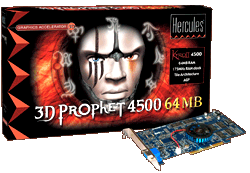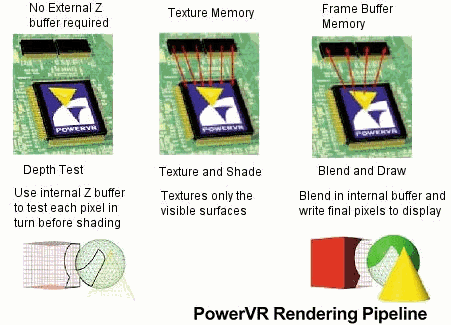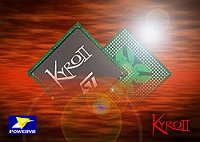Introduction

The Kyro II based graphics card uses a different type of rendering technology. Which uses Tile based rendering, this type of rendering has been around for a while. It first surfaced with the Power VR chipset back in the late 90's, this chipset had a brief period where games drivers where developed specifically for it. These games, included Quake 2 among others. The chipset needed written support within the game to work correctly, the drivers for the Power VR chipset at the time where somewhat buggy, a while ago Power VR developed a newer chipset, the Kyro. This was heralded as a newer and superior tile based rendering chipset, but unfortunately it was released around the same time as the Nvidia GeForce2 MX. So the Kyro was somewhat forgotten in the limelight of the GeForce2 MX. The tables have turned somewhat as ST have just released the Kyro II chipset. The Kyro II offers lots on the advertising literature lets see what it actually provides in terms of performance.
The Kyro II follows on in the line of PowerVR cards that do the rendering in a completely different way, to put it simply the Kyro chipset only renders what is visible in a 3D scene. When an object is in front of another it blocks the object behind it, with a traditional render device such as a GeForce, it renders everything in the scene and then just before the scene is displayed the hidden objects are hidden, the Kyro, only renders what is visible, thereby saving a whole lot of memory bandwidth on hidden objects, the hidden objects are taken out of the equation long before a rendering call is given. The picture below shows the differences between the two different rendering platforms.

As you can see on a conventional renderer such as a GeForce2 there is much more use of the external memory bandwidth as denoted in the red arrows in the diagram above, this shows just how much bandwidth the Kyro II is saving. there is far less use of the bandwidth due to the intelligent design. There are far more detailed reports on the rendering process in the Kyro chipset, but here, I'm just going to concentrate on how it performs. Hercules are among the early adopters of the Kyro II chipset so lets see how it works in practice.










